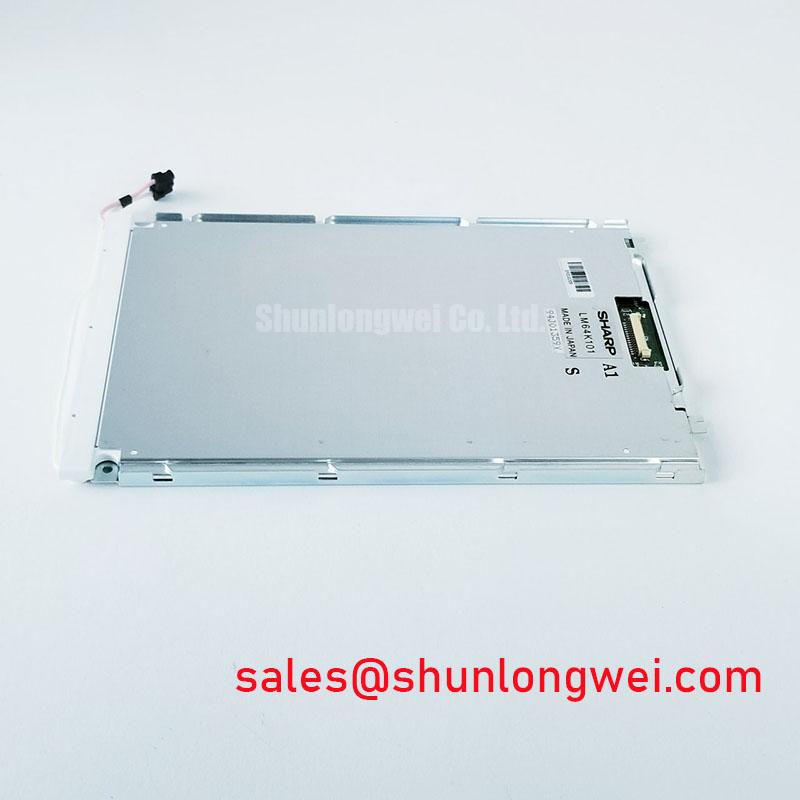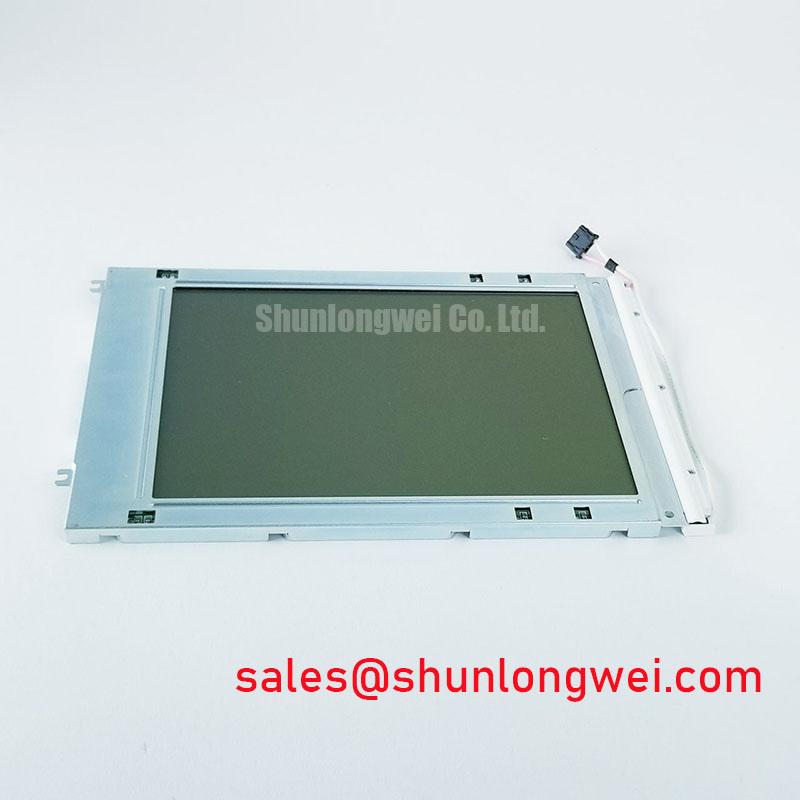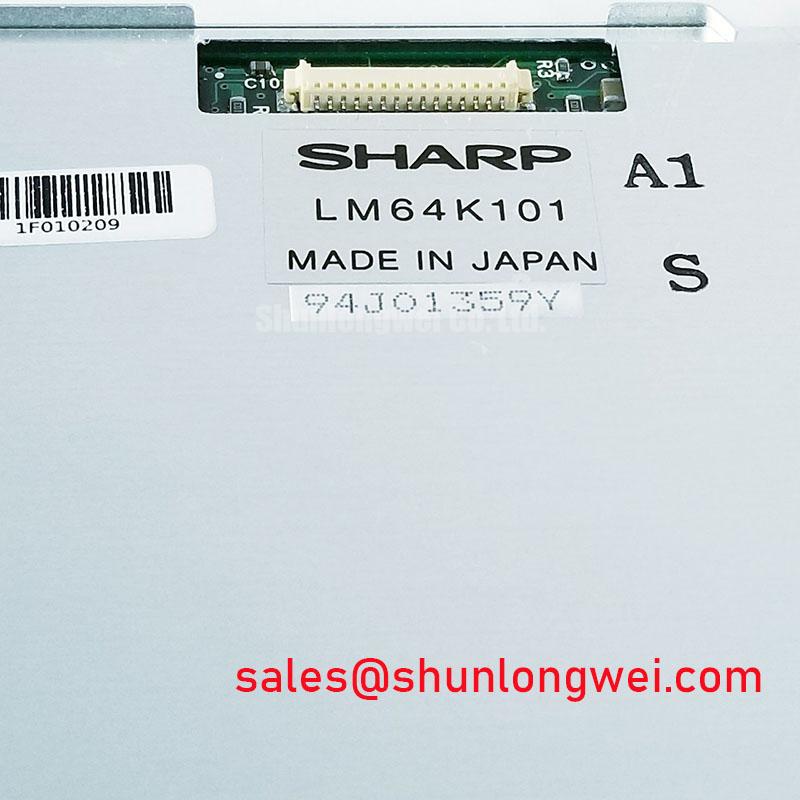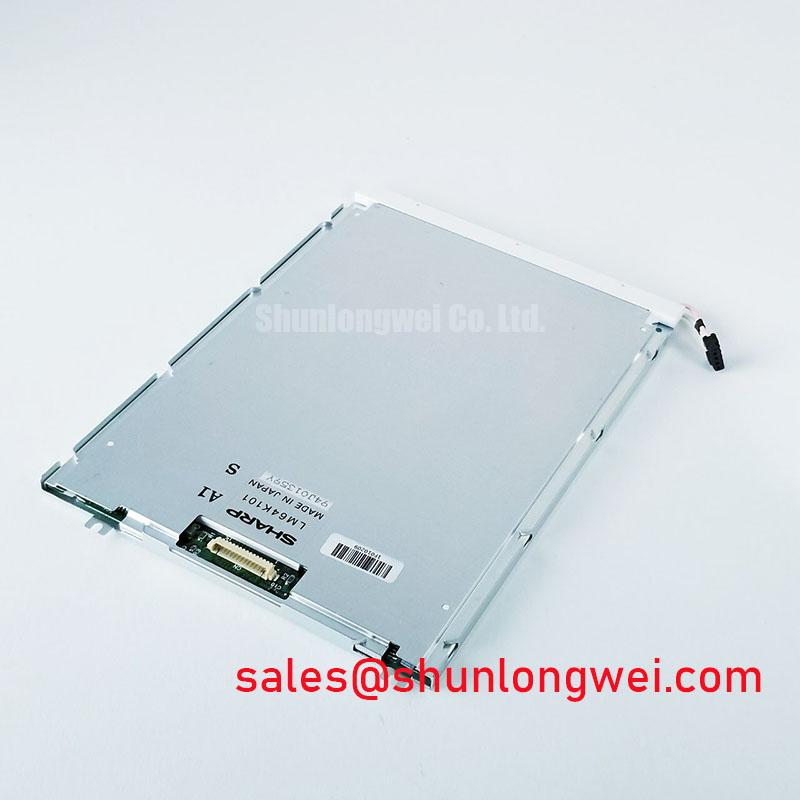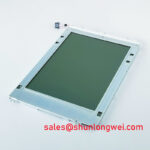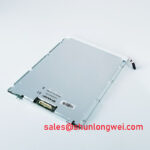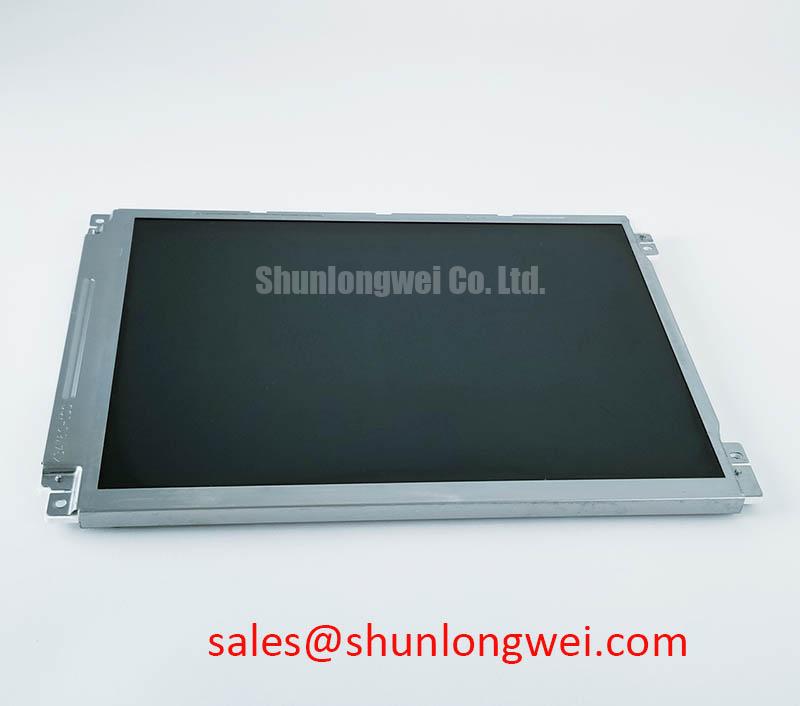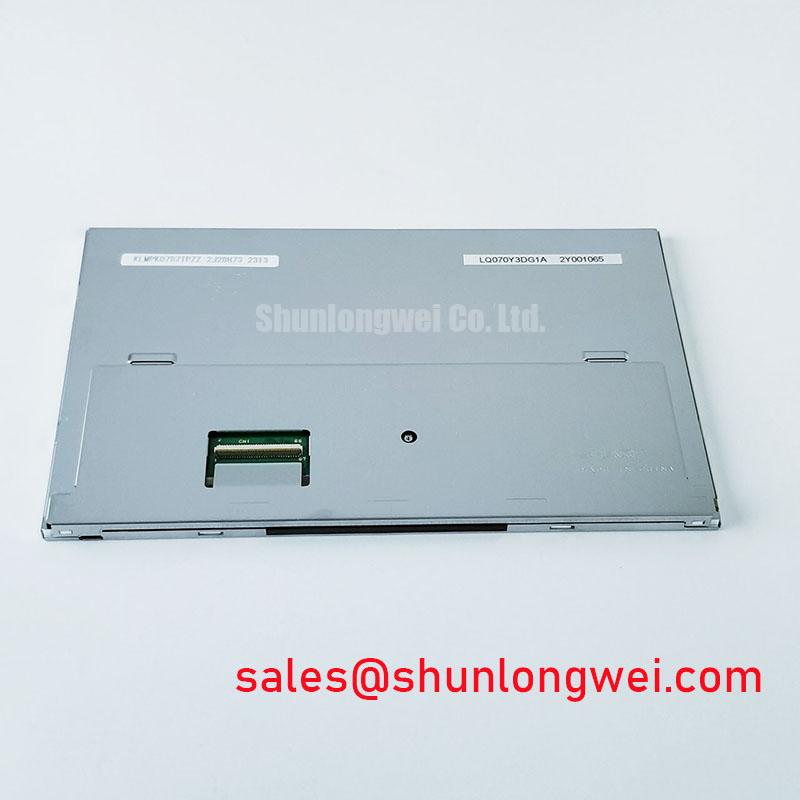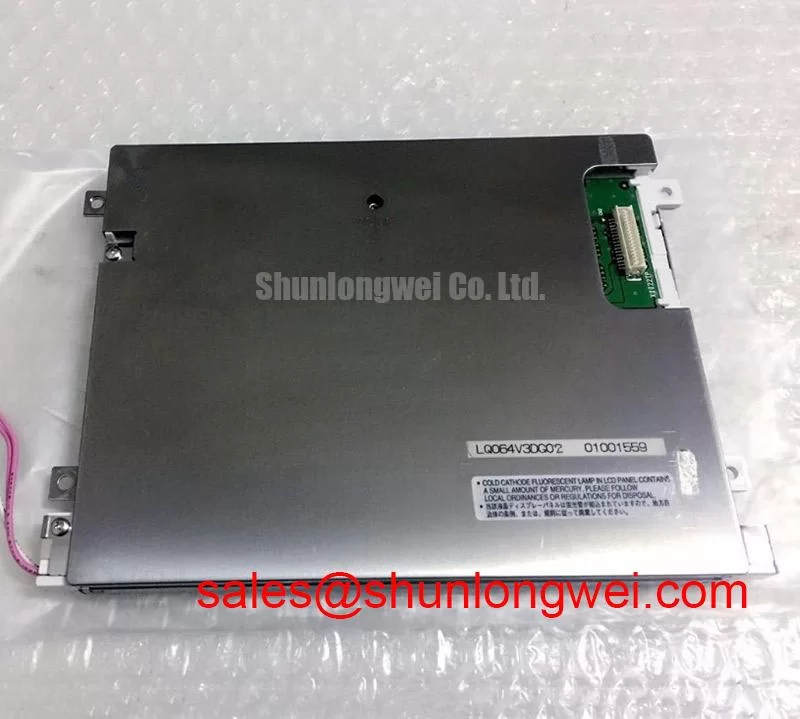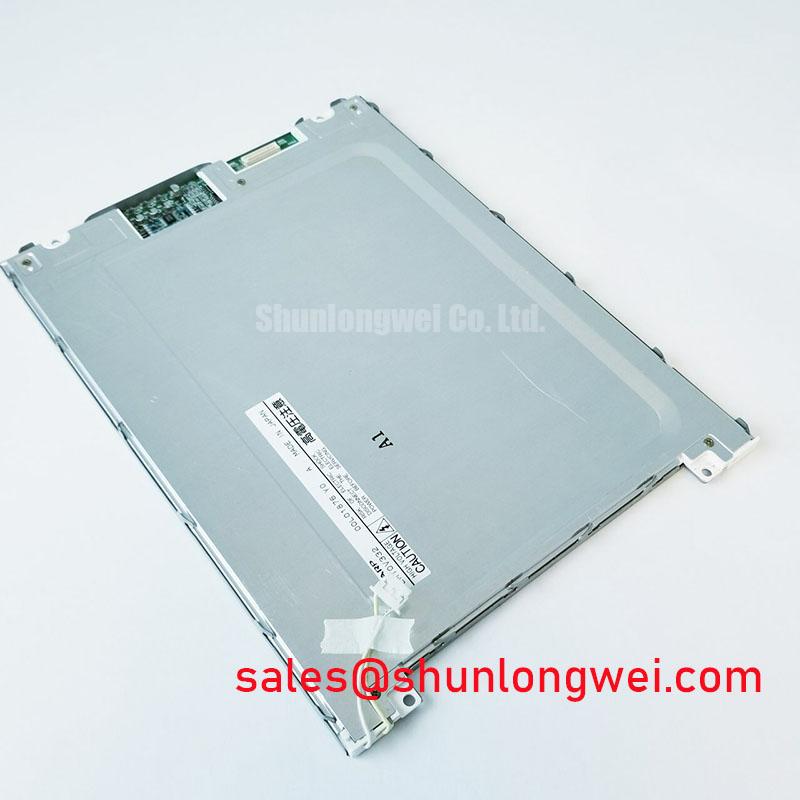Content last revised on November 14, 2025
Sharp LM64K101: Engineered for Enduring Clarity in Industrial Systems
The Sharp LM64K101 is a 7.2-inch FSTN (Film-compensated Super-twisted Nematic) monochrome LCD module designed for applications demanding exceptional readability and long-term operational stability. At its core, this display leverages a passive-matrix technology refined for high-contrast, black-and-white data visualization. Unlike modern color TFTs, the FSTN architecture excels at presenting crisp, clear alphanumeric and graphical information without the complexities of color processing. This deliberate design choice results in a component with remarkable durability and a stable performance profile, making it an ideal solution for sustaining the lifecycle of critical industrial and medical equipment where visual precision and reliability are paramount.
The Strategic Value of Proven Display Technology
In an era of rapid technological turnover, the LM64K101 represents a strategic asset for maintaining operational continuity. Many essential systems in manufacturing, process control, and medical diagnostics were designed with specific HMI component specifications. A complete system overhaul is often economically prohibitive and introduces significant re-validation and training costs. The Sharp LM64K101 provides a direct-fit replacement path, preserving the integrity of the original system design while restoring visual performance. This approach minimizes downtime and capital expenditure, reflecting a pragmatic industrial strategy focused on total cost of ownership rather than chasing the latest technology for its own sake. It ensures that proven, high-value capital equipment can continue to deliver returns for years to come.
Deconstructing FSTN: The Foundation of Readability
The superior performance of the Sharp LM64K101 in its intended applications stems directly from its FSTN LCD technology. This design utilizes a layer of retardation film between the STN glass and the front polarizer. This film effectively cancels out the inherent coloration (typically yellow-green or blue) of standard STN displays, resulting in a true black-and-white output. This optical correction is the key to its high contrast ratio and wide viewing angles, which are critical for operators who need to glean information at a glance from various positions. The display's CCFL backlight provides bright, uniform illumination across the entire 640x480 pixel array, ensuring that every character and graphic is rendered with sharp definition, much like reading crisp text on paper. This clarity reduces operator eye strain during long shifts, directly contributing to improved accuracy and productivity.
Frequently Asked Questions for System Integrators
- What makes the LM64K101 a better choice than a modern color TFT for certain applications?The LM64K101's FSTN monochrome display offers higher contrast and sharper text/line-art rendering, which is superior for text-heavy or schematic-based interfaces in industrial controls or medical monitors. Its simpler architecture also contributes to a longer operational lifespan and greater resistance to the environmental stresses often found in these settings.
- Is the CCFL backlight on the LM64K101 user-replaceable?Yes, the Cold Cathode Fluorescent Lamp (CCFL) backlight is a modular component that can be replaced. This significantly extends the service life of the display module, making it a cost-effective choice for long-term maintenance and repair cycles. We also offer compatible LED conversion kits for users seeking to upgrade to solid-state lighting.
- Can this display operate in environments with significant temperature fluctuations?The LM64K101 is specified for a standard operating temperature range of 0 to 50°C. While robust for indoor industrial environments, applications requiring wider temperature ranges should consider specialized models. For guidance on displays rated for extreme conditions, explore our resources on engineering for heavy machinery.
- What is the typical interface for this display module?The LM64K101 utilizes a parallel data interface, which was a common standard for industrial and embedded systems of its era. This ensures backward compatibility and simplifies the process of integrating it as a drop-in replacement for older, failing displays without needing complex signal conversion hardware.
Core Performance Specifications at a Glance
This table highlights the key metrics that define the LM64K101's role as a reliable display solution for legacy and specialized systems. For a complete list of specifications, please Download the Datasheet. A comparable model to consider for similar applications is the LMG5271XUFC-D.
| Parameter | Specification |
|---|---|
| Manufacturer | Sharp |
| Display Technology | FSTN (Film-compensated STN) Monochrome LCD |
| Resolution | 640 x 480 (VGA) |
| Active Area | 147.18(W) × 110.38(H) mm |
| Backlight System | 1 x CCFL with Inverter |
| Operating Temperature | 0°C to +50°C |
Sustaining Critical Systems: Where the LM64K101 Excels
The design philosophy behind the Sharp LM64K101 makes it an indispensable component in specific, high-value sectors. Its proven reliability and exceptional clarity are leveraged in applications where data must be interpreted quickly and without error. Key deployment areas include:
- Industrial Automation: Serving as the operator interface for CNC machines, PLC controllers, and injection molding equipment where clear, unambiguous presentation of machine status and programming data is essential.
- Medical Instrumentation: Used in patient monitoring systems, ventilators, and diagnostic equipment that require a stable, high-contrast display for critical vital signs and waveforms.
- Test and Measurement: Integrated into oscilloscopes, spectrum analyzers, and other scientific instruments that rely on precise graphical data representation.
Understanding the nuances of different display technologies is crucial for making the right selection. For a broader perspective, see our definitive engineer's guide to TFT-LCD technology.
Deployment Snapshot: Extending CNC Machine Lifespan
A mid-sized manufacturing facility faced a critical failure: the original display on a key CNC milling machine, operational for over 15 years, had failed. The cost of a new machine was prohibitive, and retraining operators would cause significant production delays. The maintenance team sourced a Sharp LM64K101 as a form-fit-function replacement. The installation was completed in under two hours, leveraging the display's compatible interface and mounting points. The result was a restoration of the machine's HMI to its original performance level, with operators noting the improved brightness and contrast over the aging original panel. This intervention extended the productive life of a multi-million dollar asset for a fraction of the cost of replacement.
Alternative Paths: Retrofit vs. Redesign
When faced with a failing legacy display like the one the LM64K101 is designed to replace, engineering teams have two primary options. The first is a full system redesign, which involves replacing the entire HMI and potentially the underlying controller. While this offers access to the latest technology, it incurs high costs, requires extensive software redevelopment, and may necessitate system-wide re-certification. The second path, championed by the LM64K101, is the retrofit. This approach focuses on component-level replacement. The LM64K101 offers a direct, low-friction solution that preserves the validated system architecture. It is a testament to the design principle of sustainable engineering, prioritizing resource efficiency and operational stability. For engineers weighing these options, the LM64K101 provides a compelling case for preserving proven systems, ensuring reliability without the risks of a complete overhaul. For more on display technologies, see the foundational information on TFT-LCD from Wikipedia.
A Forward-Looking Approach to Sustaining Technology
The continued availability and relevance of the Sharp LM64K101 underscore a crucial industrial strategy: maximizing the value and lifespan of existing assets. By providing a reliable, high-quality component for repair and refurbishment, this display enables a more sustainable and economically sound approach to technology management. It allows organizations to defer massive capital expenditures and avoid the operational disruptions associated with system-wide replacements. Investing in components like the LM64K101 is not just about maintaining the past; it's about making a strategic decision to ensure the continued productivity and reliability of proven systems well into the future, guaranteeing that critical infrastructure remains robust and efficient.

